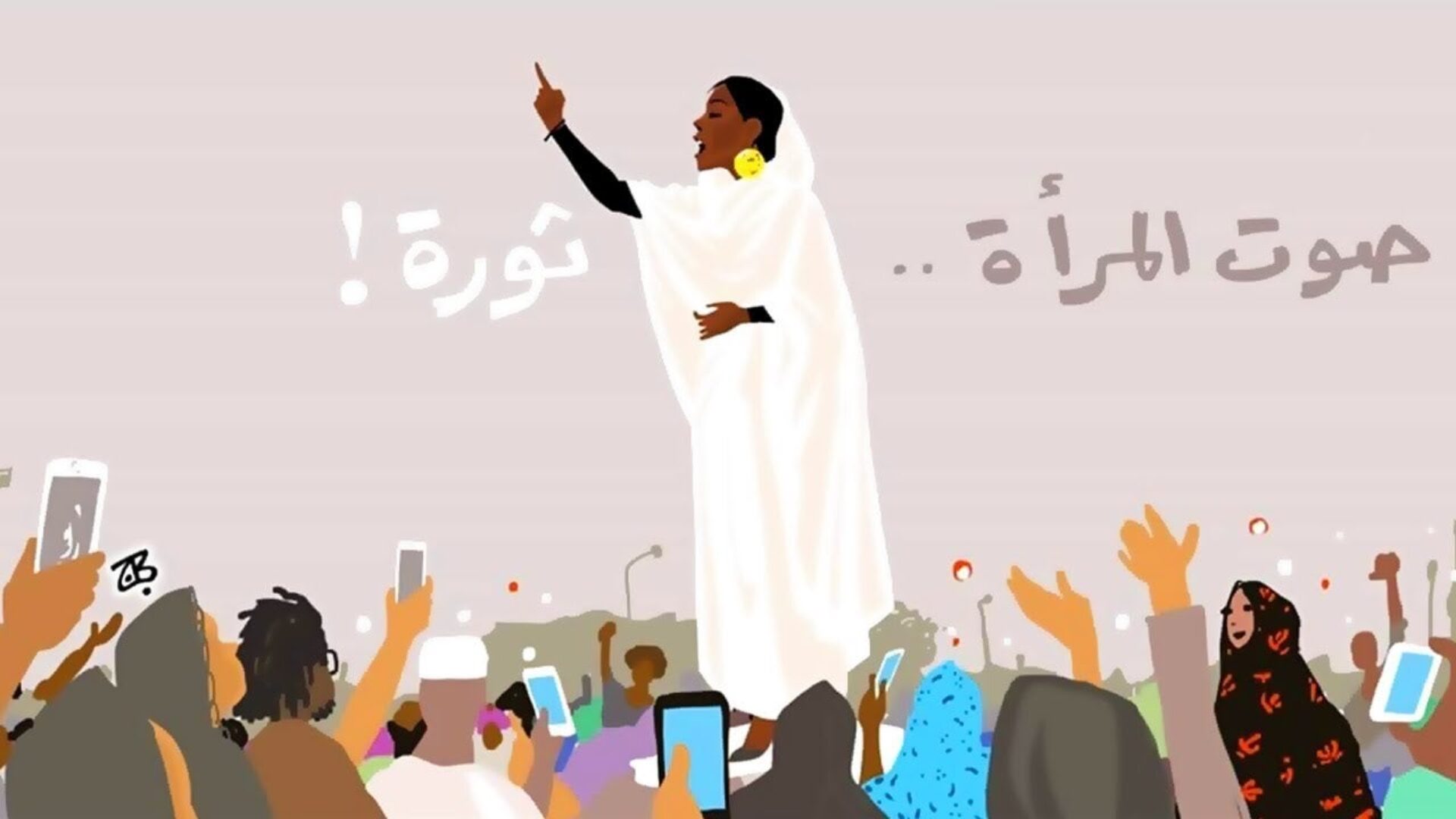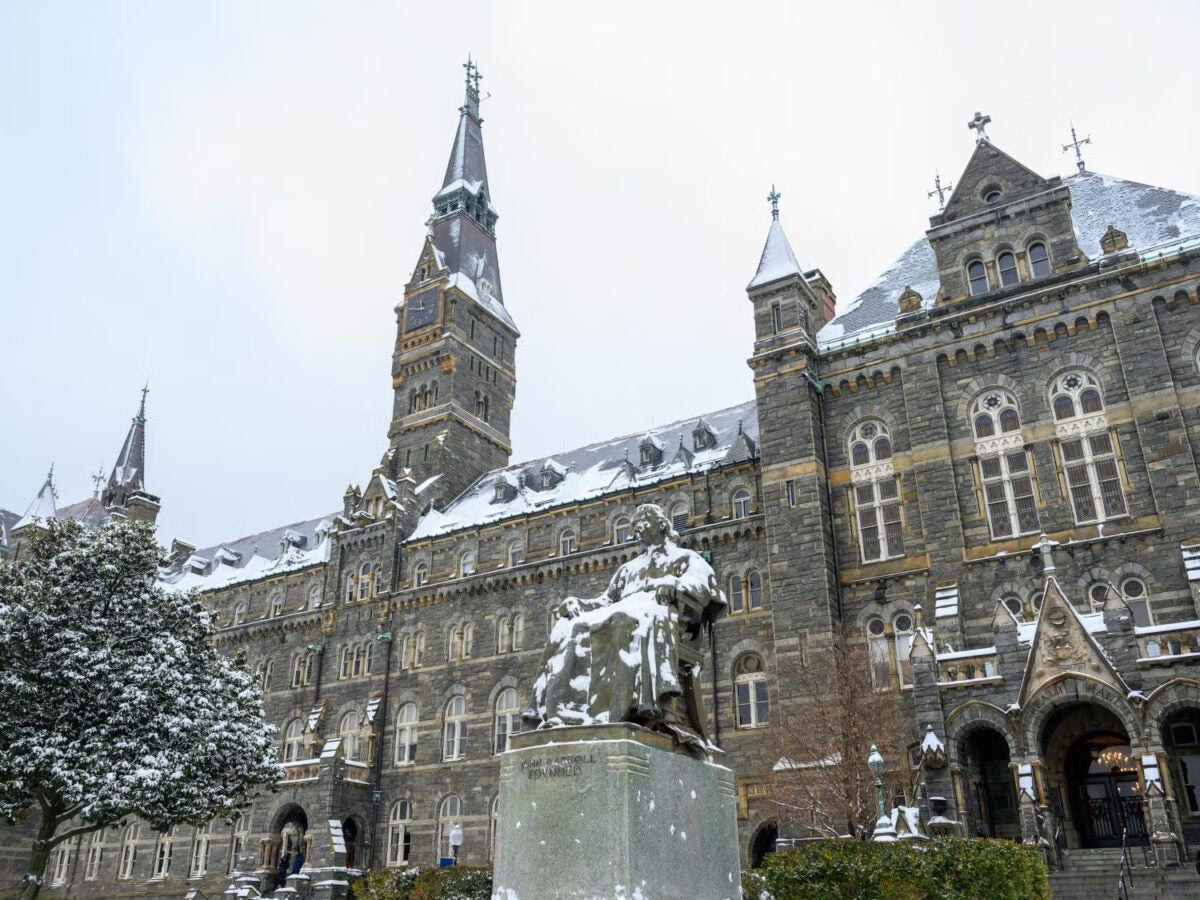Sudan Spring: Lessons from Sudanese Women Revolutionaries

Today, April 11, marks one year since former Sudanese President Omar Hassan al-Bashir was apprehended by military officials and placed under house arrest, ending his decades-long authoritarian reign. Since then, the women who were on the frontlines of the revolution and helped to usher in a new transitional government in Sudan have seen modest yet significant success in gaining senior-level positions as negotiators, cabinet officials, and diplomats. Though women activists were instrumental in all Arab Uprisings, few have achieved such representation in post-conflict governments. What can other Arab women revolutionaries learn from the success of Sudanese women?
Starting in the winter of 2019, Sudan and Algeria experienced a new wave of the Arab Spring that led to the removal of their long-term presidents. Like the first wave in 2011, this “second wave” saw protestors take to the streets demanding regime change and freedom. Women actively participated and shouldered an equal burden with men to achieve desirable outcomes in both countries. No one can forget the image of Alaa Salah, a bold young woman in a traditional Sudanese dress, who at just 22 years old became one of the icons of Sudan’s revolution. Alaa led demonstrations in front of military headquarters, bravely chanting: “The bullet doesn’t kill. What kills is the silence of people.”
Women were similarly active in first wave of Arab uprisings. When a protest in Tunisia in 2010 sparked a major anti-regime movement that swept through Egypt, Libya, Yemen, Syria, Bahrain, and Morocco, Arab women worked side-by-side with men. They effectively sparked demonstrations, organized activities including sit-ins, delivered speeches, sang songs, provided medical help in field hospitals, and distributed food. They were on the front lines of the demonstrations demanding freedom, dignity, and social justice.
Like Arab men, women paid the price for their activism. They were arrested, tortured, raped, and even killed. But what is astonishing is that after playing an equal role in removing the heads of regimes in some countries and carrying an equal burden in challenging the deeply-rooted undemocratic regimes, Arab women have since been neglected in high-level politics. National cabinets that were formed in Tunisia, Egypt, and Libya after the removal of long-term presidents did not reflect the massive participation of women in demonstrations. In Libya, for example, the post-revolution cabinet that formed on December 4, 2011 included only two female ministers out of twenty-seven ministers. The same can be said in Egypt. Remarkably, Tunisian women, through exerting pressure on political parties, improved their representation in the elected bodies. However their representation remained minor in the post-revolution cabinets, and even the current cabinet has not reflected the expectations of Tunisian women: just four female ministers out of thirty.
Across countries, the few ministerial positions that were given to women were not strategic positions, such as foreign affairs or finance ministries. Their responsibilities were limited to traditionally feminine topics such as education, environment, and health ministries. Algeria’s post-revolution cabinet has resonated the setbacks of the first wave of Arab uprisings in terms of the representation of the women in the post-revolution cabinet: five traditional ministerial positions out of thirty-nine positions.
Sudan is largely the exception to this trend. Sudanese women were key political players from the beginning of protests in December 2018, and they have continued to be politically represented post-conflict. Indeed, it is the early political power that Sudanese women wielded that differentiates them from their Arab sisters. Sudanese women served as representatives of the revolutionary entity, The Forces of Freedom and Change alliance (FFC), and played a critical role negotiating with the military. In fact, The Sudanese Professionals Association and No to Oppression against Women Initiative were the core of the FFC. Eventually, the alliance that consisted of women’s associations, youth groups, community groups, and trade unions succeeded on April 11, 2019, in ending Omar al-Bashir’s decades-long grip on power. The active role of Sudan’s women in both the alliance and demonstrations further cemented women’s representation in four important ways.
First, Sudanese women participated in the negotiations with the Transitional Military Council (TMC). The negotiations ended with the signing of a power-sharing deal, or the Constitutional Declaration (CD), between the FFC and TMC which will theoretically pave the road for a transition to civilian rule in Sudan.
Second, Sudanese women obtained two seats out of eleven total positions in the Sovereign Council that replaced the TMC in governing Sudan for the three-year political transition period and oversee the cabinet and the creation of a legislative council.
Third, the CD’s provisions explicitly outline the protection of the economic rights of Sudanese women. That declaration indeed raised the threshold on gender-sensitive provisions of Track I peace agreements in Africa.
Finally, Sudanese women have obtained positions in the interim government that governs Sudan until elections are held, though just four of the eighteen ministries are headed by women. Remarkably, a Sudanese woman, Asma Abdullah, obtained a strategic position as the Minister of Foreign Affairs for the first time in Sudan and in the Arab region in general.
It seems that Sudanese women have learned from the setbacks of other Arab Spring countries that saw slight or no gains for women following the protest movements of 2011. Sudanese women’s early engagement in street politics, advocacy campaigns, and political negotiations have facilitated their representation in high-level politics—a clear-cut lesson for their peers.
While Arab women in general and Sudanese women, in particular, have proved their competencies in the positions they have held, their struggle to obtain desirable strategic positions in high-level politics extends beyond the national level. There is an absence of women’s representation in the Track I of diplomacy in the Arab region. The United Nations (UN) has continued to appoint male envoys to mediate conflicting parties in the Arab world; not a single woman has been appointed as a UN envoy to the region. On March 2, The UN special envoy to Libya, Ghassan Salame, resigned from his position. Is it time for the UN Secretary-General to choose a qualified Arab woman as his successor? If that happens, we might say, after a long time, the Spring has not only hit Sudan but also, finally, hit the UN’s doors!
Nagwan Soliman is an Affiliate Scholar at the Georgetown Institute for Women, Peace and Security.
Explore More

End of Year Reflections
This year has been particularly challenging for peace around the world, with…

“No Amnesty, No Silence:” Ukrainian Women Urge Accountability for War-Time Sexual Violence
Last week, the Georgetown Institute for Women, Peace and Security (GIWPS) brought…
